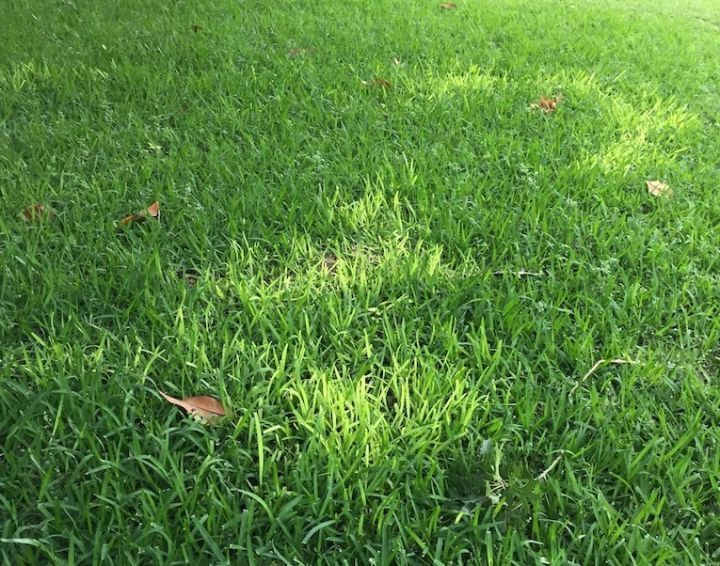Don’t Drown Your Lawn!
May 25, 2017 | By webadmin
Now that your lawn has come fully out of winter dormancy, you’ll need to manage your watering schedule differently as we move through the spring and summer season. The weather will dictate whether you need to cut back, or add water. It’s been humid and a bit rainy lately, so might find yourself dealing with some fungal diseases in your lawn if you’re watering too much or too often.
How much should I water?
The best rule of thumb when it comes to watering your established lawn is to deliver the equivalent of 1-inch of rainfall per week. If that water comes in the form of rainfall, you don’t need to run your sprinklers. One deep watering per week is much better than several shorter waterings. Frequent short waterings can result in weak, shallow root systems, fungal diseases, and pest problem. Set your irrigation system to water your lawn zones once per week, for a long enough duration to deliver 1” of water. You may need to split that watering up into two start times (using your A and B program cycle) to allow each zone the time to absorb the water and reduce runoff.
Side effects of too much water.
There are a few common problems that could arise due to too much moisture on your lawn, especially when it’s humid outside.
Fungal Diseases: Warm temperatures + high humidity are the prime environmental hazards that attract fungal diseases and cause them to flourish.

Take-All Patch infecting a lawn.
- Take-All patch is a soil-based fungal disease that’s becoming a bigger problem. Too much water coupled with compacted soil and weakened grass due to too much shade, encourages Take-All Patch disease. Look for discolored leaf blades that turn yellow then fade to brown. Left unchecked, it can kill off large areas of your lawn - even your entire lawn.
- Brown Patch is another fungal disese that we're seeing on the rise. Compacted soil, over fertilizing and too much water are everything Brown Patch looks for in a lawn. If you notice circular patches of grass turning brown or yellow (orangeish if you have Bermudagrss), plus tan spots with dark brown edges, then you could have Brown Patch.
- Gray leaf spot becomes a problem in lawn areas that are too shaded and wet. High humidity and extra rainfall encourage its spread. Look for small brown diamond shaped spots with purple edges on leaf blades that give the lawn a scorched and thinning appearance.
Uninvited guests.
When your lawn is weakened from poor water management, it becomes pretty inviting to destructive pests. Look out for these summer lawn culprits:
- Chinch bugs damage lawns in irregular shaped patches in sunny, warm parts of your lawn often next to sidewalks or driveways that receive reflected heat. Grass turns yellow and will die off if untreated.
- Bermuda Grass Scale is a tiny insect that affects lawns that are grown in poor soil, shade, thatch-filled lawns, and overwatered lawns. Look for them at the nodes and crowns of your turf. They look like tiny white oyster shells and suck fluids from grass, turning it yellow, then brown and leaving it void of nutrients.
Prevention is best.
With the right amount of water, soil aeration, timely fertilization, and overall good lawn maintenance, these fungal diseases and pests can be avoided. Pay attention to the weather - you may need to skip some waterings right now if rainfall and high-humidity persist.
If your lawn looks like it’s in decline, hasn’t fully come out of winter dormancy, or appears to be infected with a disease or pest, give our team a call for a lawn-maintenance reboot or renovation.
